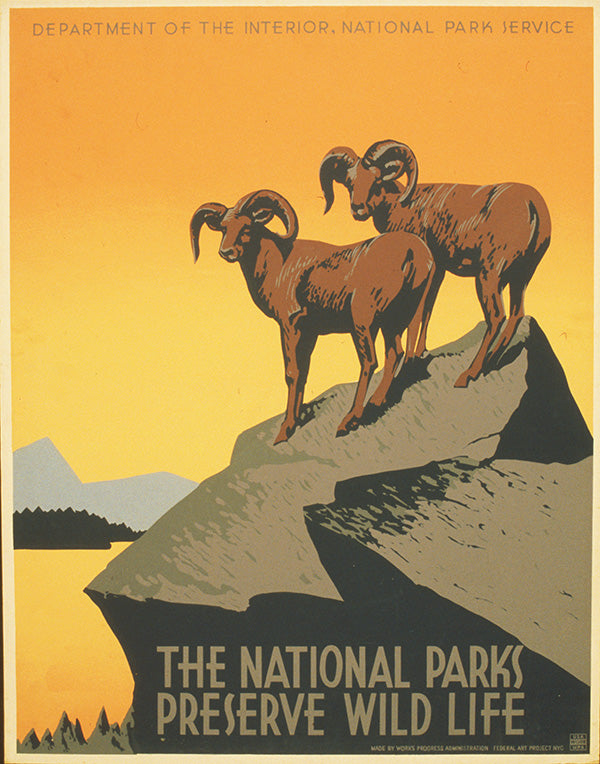
What were the WPA posters?
Robert DeckerThe rich tapestry of WPA posters, dating from 1936 to 1943, brings to light the vibrant colors and bold designs of a historic era, now viewed through the lens of modern reinterpretation by photographer and graphic artist, Rob Decker. Decker, who trained under Ansel Adams when he was just 19 years old, infuses his artwork with a contemporary sensibility while staying true to the historical essence of the originals.

The WPA, or Works Projects Administration, was established in 1935 by President Franklin Delano Roosevelt as a part of his New Deal initiative. The WPA gave birth to Federal Art Project Number One, designed to fund the creative pursuits of artists, musicians, actors, and writers. The artists under this program, including poster artists, formed the heartbeat of an ambitious, culturally-oriented vision of the New Deal, blending artistry with everyday life.
So, what were the WPA posters? The WPA posters were masterpieces of a variety of art forms, including silkscreen, lithograph, and woodcut, chronicling a vivid spectrum of government-sponsored projects. This array included health and safety programs, cultural initiatives, travel and tourism, educational schemes, and community activities. The remarkable project set the stage for art to become an accessible, enriching part of every American's life, transcending the boundaries of the elite.

The creation of these posters was a melding of artistry and industry. Initially hand-painted, the process later shifted to silkscreen, a technique refined for mass production by artist Anthony Velonis in 1936. The production was collaborative, with artists responsible for design, color selection, and sometimes stencil-cutting, while the technical team handled the printing process. This innovative method made it possible to print up to six hundred posters in a day, resulting in over two million posters from thirty-five thousand designs during the WPA project's lifespan. Today, approximately 2,000 of these posters remain known to exist.
Just as Rob Decker draws inspiration from these historical masterpieces to reimagine them for a modern audience, the original WPA posters offered an innovative and inspiring approach to the art of poster design. This initiative not only preserved the skills of artists during a challenging time but also broadened the landscape of American artistic expression. From this rich soil, a distinctive American poster style emerged, continuing to inspire artists like Decker in the present day.

Continuing the legacy of the WPA posters, Rob Decker, having honed his skills under the tutelage of Ansel Adams, now illustrates national parks in the style reminiscent of these historical posters. Just as the original artists were tasked with capturing the essence of their subjects – be it a health initiative, a cultural program, or an exhibition – Decker also focuses on capturing the unique spirit and beauty of America's national parks.

The posters produced under WPA were pioneering, not just for their aesthetic appeal, but also for their role in bringing art to the mainstream. Much in the same way, Decker’s posters blend artistry with accessibility, capturing grand landscapes in graphic art and making it available to all. His work is not just a tribute to the iconic WPA posters, but a continuation of their ethos - a democratization of art and a celebration of America's rich cultural and natural heritage.

Like the WPA posters, Decker's creations are not only visually stunning, but they also serve a broader purpose. They carry the torch of raising awareness, although the focus now has shifted from government programs to environmental conservation and appreciation of natural beauty. His work draws attention to the value of national parks, encouraging the viewer to understand and appreciate their importance, much as the original WPA posters promoted important cultural and societal initiatives of their time.

As the story of WPA posters continues to inspire, the modern adaptation by artists like Rob Decker showcases the timelessness of this art form. It is a testament to how the spirit of creativity can adapt, morph, and stay relevant, while still paying homage to its roots. This connection to the past, while looking ahead to the future, truly embodies the enduring appeal and the transformative power of art. Today, the WPA posters and their modern-day representations stand as captivating chronicles of American history and artistic evolution, ensuring the stories they tell will continue to be celebrated and cherished.
Click here to learn more about the artist, Rob Decker...
Join the growing community of 80k+ National Park enthusiasts to receive insider deals and updates.
